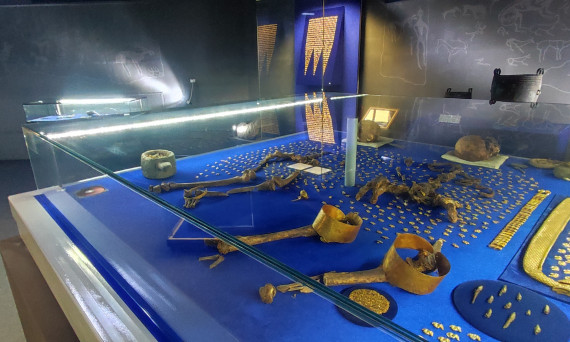Artem Nedoluzhko, scientific director of the European University’s Laboratory of Paleogenomics together with Konstantin Chugunov, a researcher of the State Hermitage Museum, and with the assistance of the curators of the Tuva Republic’s Aldan-Maadyr National Museum, gathered a selection of anthropological material associated with the carriers of the Aldy-Bel archaeological culture.* The material was buried in the elite funerary and memorial complex Arzhan-2 in Tuva’s “Valley of the Kings”.
The samples were collected as part of a research project of the European University at St. Petersburg. The project’s goal is to study and reconstruct details of the genetic history of Scythian-type nomads in the Tuva Republic’s “Valley of the Kings”. The study focuses on origins and migrations, analysis of the kinship between people buried in the archaeological sites of Arzhan-2 and Chinge-Tei I, analysis of viral and bacterial pathogens that affected them, and the genetic/social structure of local societies.
Artem Nedoluzhko elaborates:
In the 1st millennium BC, the bearers of Scythian-type nomadic cultures inhabited the Eurasian steppes from Northern China to the Carpathians. According to archaeological data, the origins of the Scythian culture can be traced to the eastern part of this steppe "corridor", primarily on the territory of the modern Republic of Tuva. Despite the key role of these early "Scythians" in archaeological studies, as well as their mention in the works of Assyrian, Persian and Greek authors, their origin, dynastic ties and migrations have not been sufficiently studied. The project, conducted by the Laboratory of Paleogenomics together with colleagues from the State Hermitage Museum and other Russian organizations, proposes to conduct paleogenomic research for the first time to reconstruct the genetic history of the carriers of the Aldy-Bel culture and other early nomads from the region.
*The Aldy-Bel archaeological culture is an Iron Age culture of Scythian-Siberian nomads who inhabited the territory of present-day Tuva in southern Siberia, dating back to the 8th-6th centuries BC.
Photo: Press Service of the Tuva Republic’s Aldan-Maadyr National Museum
